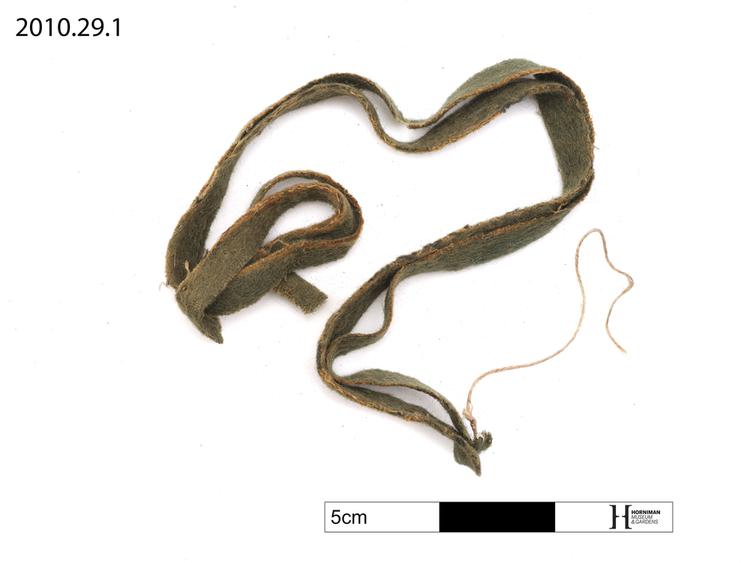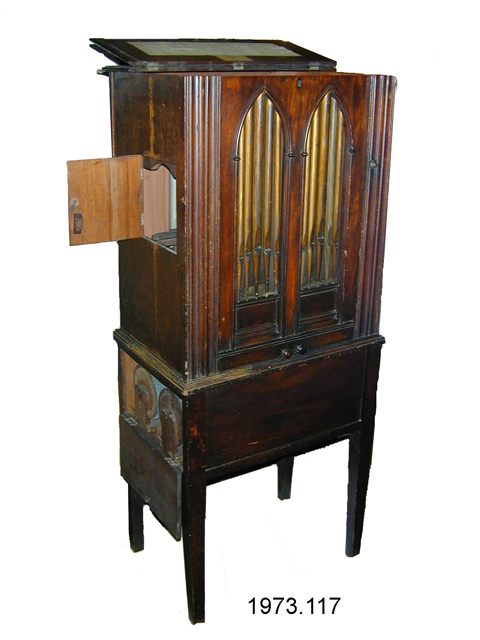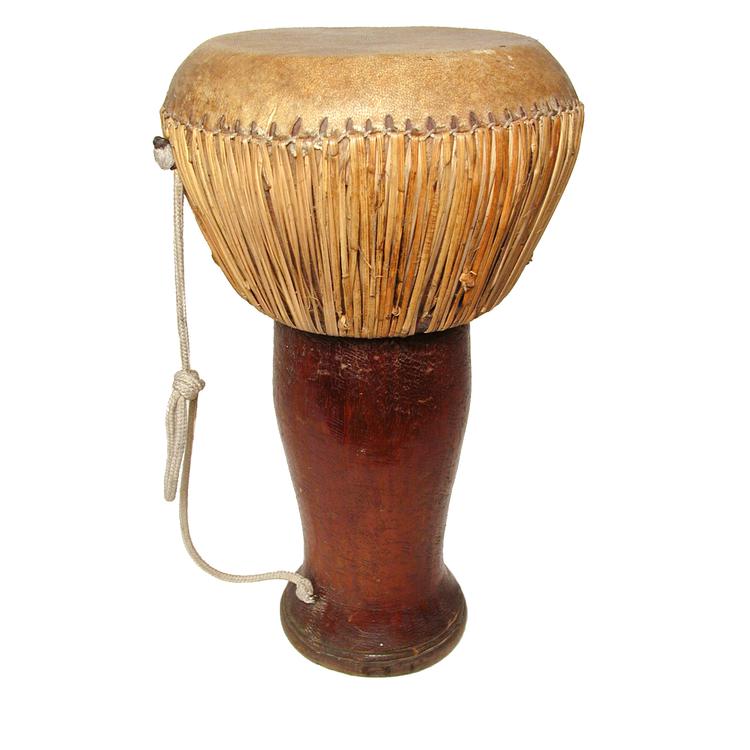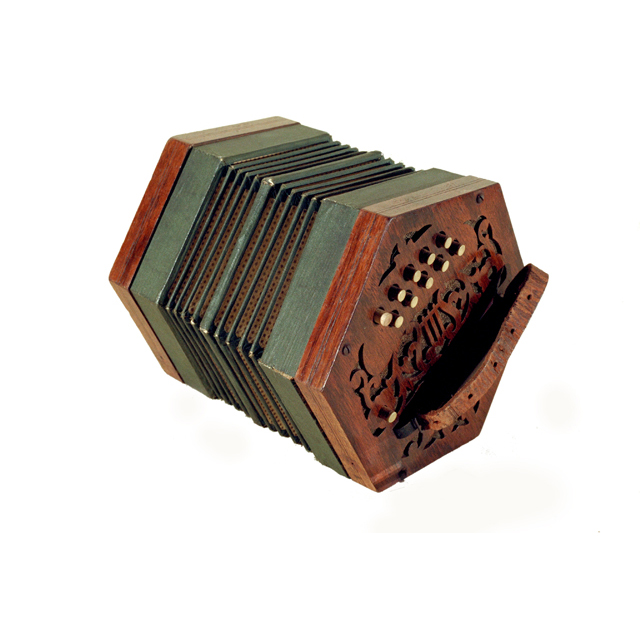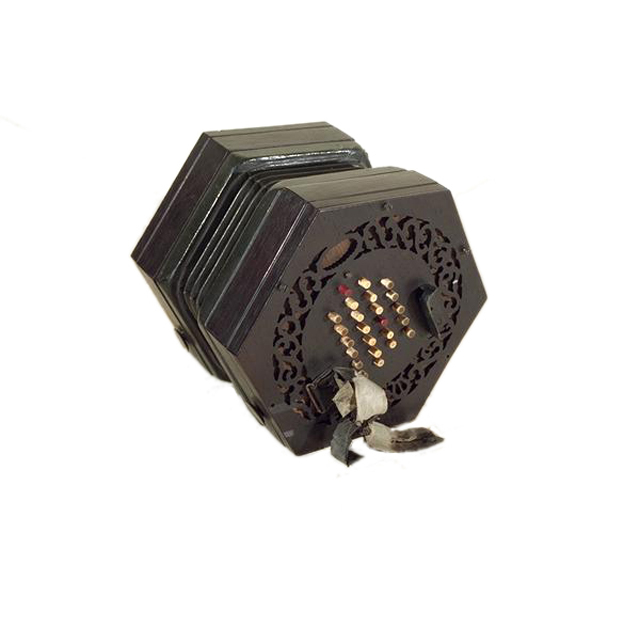
English system concertina prototype. No serial number. No label. Flat matt ebony ends probably built to standard width: 6.25 inches across parallel sides. The end frames are relatively deep and the bellows frames shallow (within sides). On this model the reeds are directly beneath fretwork, and the action deep within the ends, worked by very long keys and an action under the reed pans. 48 ivory buttons, stained accidentals. Black leather straps, worn, nickel screws. Four-fold green leather bellows, without papers. Square-end brass reeds on an unusual pan with draw string and 24 holes to allow buttons to reach the internal action. Hexagonal mahogany case with later handle and lock.
The fretwork with its lyre opposite the (empty) oval frame for the maker's label is spindle cut, and features in the Wheastone firm's instruments made after circa 1848, reflecting increasingly sophisticated mechanisation used in concertina production. This was chiefly due to the expertise of Louis Lachenal, a skilled Swiss tool maker, who joined the firm of Wheatstone around 1845. He later became a concertina maker in his own right, and this type of fretwork features in some of his output. See http://www.concertina.com/chambers/michaelstein/index.htm




